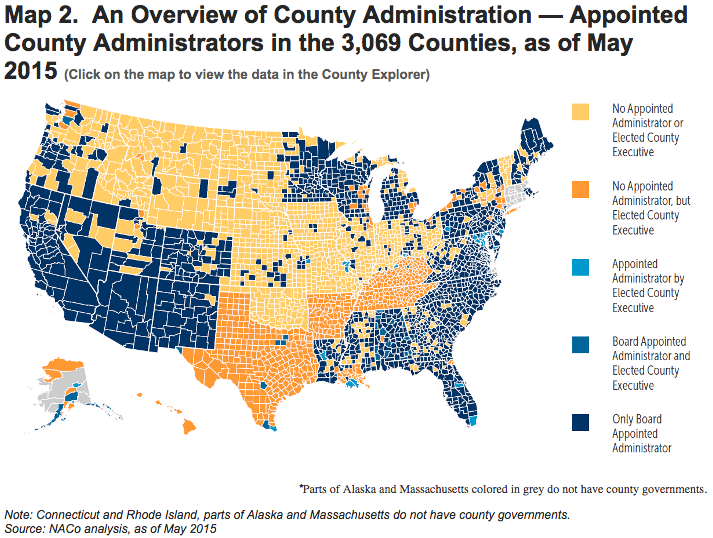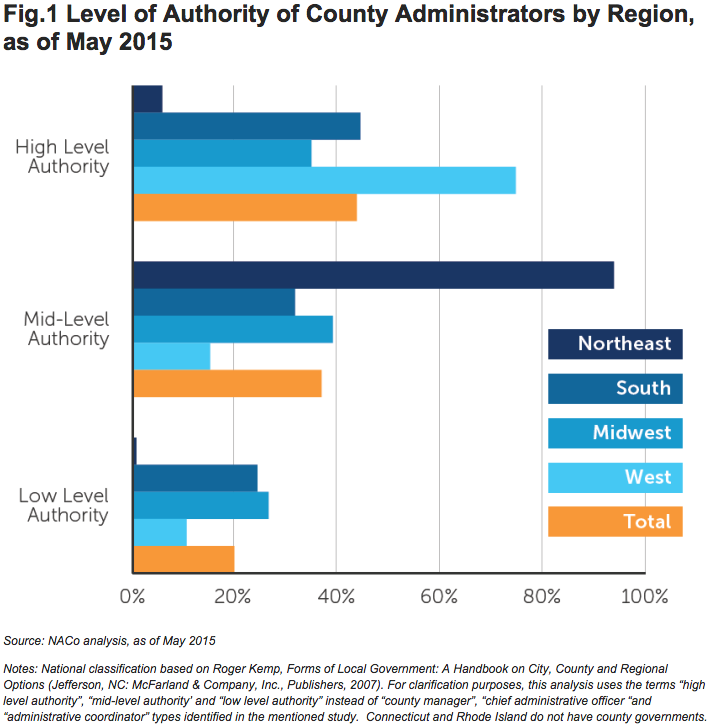County Administrators Face Changing Roles

Dragon Images / Shutterstock.com

Connecting state and local government leaders
Growing populations and increasingly complex government services have some county boards relying on their administrators more than ever, according to a new National Association of Counties report.
The number of U.S. counties appointing administrators increased to handle growing populations and responsibilities, according to a new National Association of Counties report.
While the state creation of county administrator statutes peaked in the 1970s and 80s, when federal programs and unfunded federal mandates skyrocketed, the position currently exists in 1,322 of all 3,069 counties—43 percent.
Administrators’ roles implementing county health, criminal justice and infrastructure policies can be integral, some appointing and removing department heads and preparing the annual budget as well.
“When you look at today’s environment, we have such finite resources and so many competing interests for the financial capabilities of our local governments,” McHenry County, Illinois, Administrator Peter Austin told NACo in a podcast. “That becomes a real challenge for county government, but I think it underscores the importance of professional management.”
Being a largely suburban and exurban jurisdiction northwest of Chicago, a certain level of complex, core services was expected by citizens of McHenry County, Austin said in the podcast, leading the board to create the administrator position in the mid-1980s.
In spite of economic challenges, the county achieved its five-year goal of earning a AAA bond rating under Austin’s leadership—only the third county of 102 to do so in Illinois.
Still, the county administrator position exists in only 30 percent of Midwestern counties, where they enjoy a range of authority, NACo reported. The South boasts the most county administrators, but they enjoy the highest authority in the West.

Counties are most likely to appoint an administrator in the Northeast, where the overwhelming majority have mid-level authority.

Seven states have administrators in every county while Arkansas, Hawaii, Tennessee, Oklahoma and Vermont have none.
Not to be confused with an elected county executive, which may or may not exist in tandem, the county administrator function has 115 different titles in the U.S—county manager, chief administrative officer and county director also commonly used.
As a general rule, counties with less than 50,000 residents tend to have neither a county administrator nor an executive—usually relying on the county board and other elected officials in their place, NACo reported.
McHenry County has 24 members on its board, and Austin said he has to understand the motivations of all of them while leading and coordinating about 1,200 staff members.
Where once administrators mostly just provided the board with an analysis of plans for allocating resources, Austin told NACo, now many must be aware of all county services and pressures when suggesting to elected officials cutbacks that are “part of everyday life in local government right now.”
“I’m a buffer between the county board and countywide elected officials, but I think that’s an important role also,” Austin said in the podcast. “And it’s one that often isn’t very talked about, but it is a real value of having professional staff in place to make sure your government runs as smoothly as possible.”
View all the report data using the NACo County Explorer.

NEXT STORY: Does New York State's ‘Energy Highway’ Plan Make Sense?





